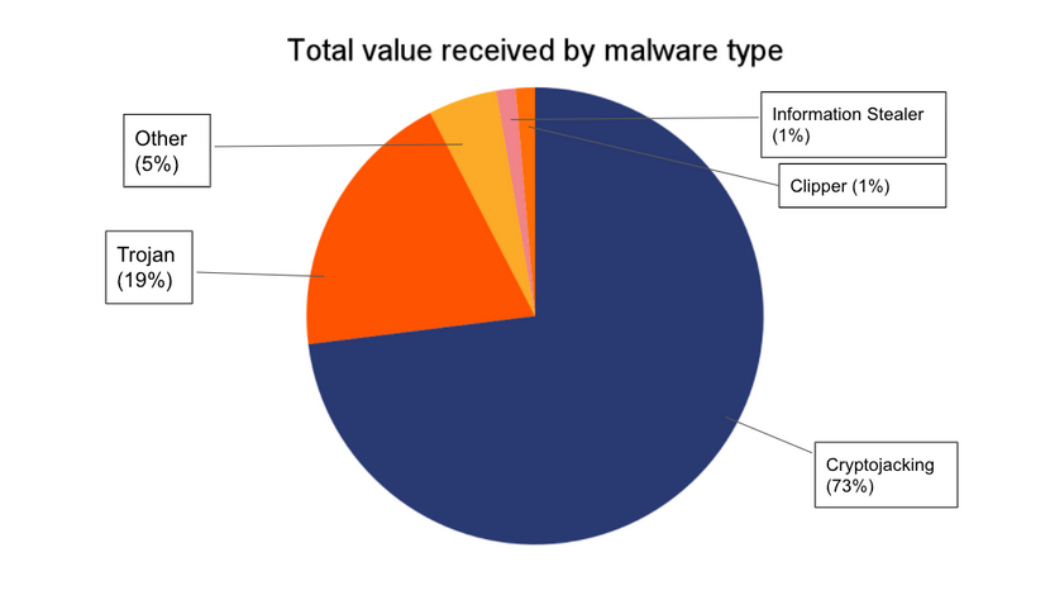Cryptojacking
Cybercrooks to ditch BTC as regulation and tracking improves: Kaspersky
Bitcoin (BTC) is forecasted to be a less enticing payment choice by cybercriminals as regulations and tracking technologies improve, thwarting their ability to safely move funds. Cybersecurity firm Kaspersky in a Nov. 22 report noted that ransomware negotiations and payments would rely less on Bitcoin as a transfer of value as an increase in digital asset regulations and tracking technologies will force cybercriminals to rotate away from Bitcoin and into other methods. As reported by Cointelegraph, ransomware payments using crypto topped $600 million in 2021 and some of the biggest heists such as the Colonial Pipeline attack demanded BTC as a ransom. Kaspersky also noted that crypto scams have increased along with the greater adoption of digital assets. However, it said that people have be...
‘Less sophisticated’ malware is stealing millions: Chainalysis
Cryptojacking accounted for 73% of the total value received by malware related addresses between 2017 and 2021, according to a new malware report from blockchain analysis firm Chainalysis. Malware is used to conduct nefarious activity on a victim’s device such as a smartphone or PC after being downloaded without the victim’s knowledge. Malware-powered crime can be anything from information-stealing to denial-of-service (DDoS) attacks or ad fraud on a grand scale. The report excluded ransomware, which involves an initial use of hacks and malware to leverage ransom payments from vicitms in order to halt the attacks. Chainalysis stated: “While most tend to focus on high-profile ransomware attacks against big corporations and government agencies, cybercriminals are using less sophisticated typ...
‘Less sophisticated’ malware is stealing millions: Chainalysis
Cryptojacking accounted for 73% of the total value received by malware related addresses between 2017 and 2021, according to a new malware report from blockchain analysis firm Chainalysis. Malware is used to conduct nefarious activity on a victim’s device such as a smartphone or PC after being downloaded without the victim’s knowledge. Malware-powered crime can be anything from information-stealing to denial-of-service (DDoS) attacks or ad fraud on a grand scale. The report excluded ransomware, which involves an initial use of hacks and malware to leverage ransom payments from vicitms in order to halt the attacks. Chainalysis stated: “While most tend to focus on high-profile ransomware attacks against big corporations and government agencies, cybercriminals are using less sophisticated typ...

